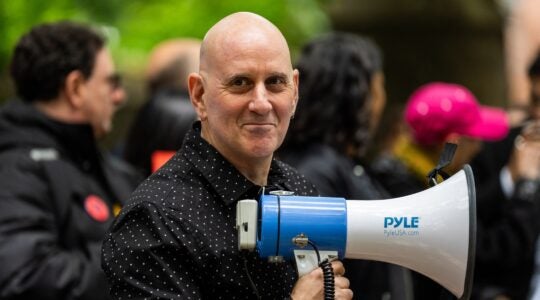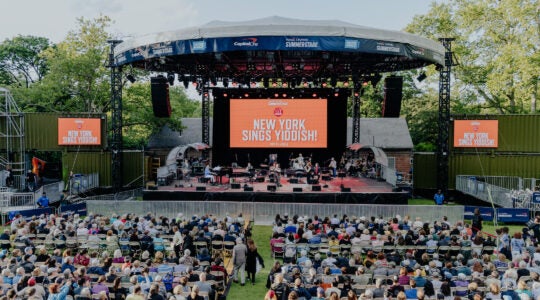As a longtime Europhile, I have to stifle a sigh when yet another friend tells me about an upcoming Paris vacation.
It’s not that I have anything against the City of Light. Au contraire! Paris has picturesque boulevards, iconic monuments, myriad museums, fabulous food, addiction-inducing shopping and a delightful urbanity that has seduced generations of Yankees. It is rightfully a mecca for connoisseurs of architecture, opera and European-Jewish culture.
But so are lots of other places. And yet, just this summer alone, no fewer than six people of my acquaintance are vacationing in Paris, and another half-dozen are contemplating trips. Paris is the default choice for new couples, urban honeymooners and those who are simply in the mood for Europe.
I want to talk these people into considering somewhere else. Yes, everybody ought to go to Paris at least once, to see what the fuss is about. The second trip is even better, because after you’ve checked off the Louvre and immersed yourself in Impressionism, you can settle in and just enjoy the pain au chocolat.
But since vacation time is limited, instead of a third trip, consider another city for that European (or European-like) getaway. Here are a few suggestions — along with appraisals of how they stack up next to Paris.
Berlin. How it’s like Paris: Berlin is also a capital city, so it’s intensely cosmopolitan. It has a thriving, youthful Jewish community, including many immigrants from the former Soviet Union. Many people, aware of how badly Berlin was ravaged during World War II, don’t realize how many vintage neighborhoods survived: from bourgeois Prenzlauer Berg to multicultural Kreuzberg, Berlin is awash in charming old buildings and boulevards. People also don’t associate Berlin with romance, but it is a city of dark, candlelit neighborhood cafés.
Where it falls short: I happen to love German food, but Paris clearly has the edge here. You can eat wonderfully in Berlin if you relish urbane variety over indigenous cuisine: it’s a great town for tapas, curries and kosher pastry. Berlin’s museums are more modest as well. But it’s a magnet for the new European creative class, so instead of Monets, you’ll find edgy music clubs and cutting-edge galleries.
Mexico City. How it’s like Paris: Mexico City is not European, but as a longtime destination for literary types and European political exiles, it has a rich intellectual and aesthetic heritage. Many of those exiles have been Jews; Mexico City has a large, long-established Jewish community. Wandering the avenues, you’ll find imposing architecture to rival anything in France, from Beaux-Arts palaces to lavish museums to imperial plazas. Mexico City also has arguably the greatest indigenous cuisine in the New World – and a historic connection to France, which briefly ruled Mexico in the 19th century and has exerted a perceptible influence on its most sophisticated dining spots. The subway system and the performing arts — both Parisian strengths — are equally noteworthy in the capital city, officially “Mexico D.F.,” for Districto Federal, and often referred to locally as, simply, D.F.
Where it falls short: Like most New World cities — but even more so — Mexico City is huge and sprawling, lacking the corner-café intimacy that makes Paris so special. While Paris’ charm is immediate, Mexico’s can take awhile to find. Extremes of wealth and poverty are also vastly more apparent in Latin America than in Europe.
Lyon. How it’s like Paris: If your heart skips a beat for all things Gallic, try this less-traveled alternative. Nestled between two rivers, Lyon boasts floodlit hilltop basilicas, exquisite gastronomy and some of the world’s most stunning architecture. Its Old City is a cobblestoned medieval district; here and throughout this compact, small-scale city, you’ll prowl through quaint boutiques and Italianate courtyards. Lyon’s major university gives the city a youthful flavor and supports a vibrant festival scene.
Where it falls short: Within France, Paris has the lion’s share of great art, of both the static and performance varieties.
Genoa. How it’s like Paris: Suspend your skepticism. Genoa, an afterthought among Italian cities, was also once an imperial giant. Its grandest boulevards are lined with palazzos that would make a French king feel right at home. More contemporary aesthetes take pleasure amid Italian Renaissance paintings in those palazzos; shops on the elegant, porticoed boulevards; and opera at the iconic Teatro San Felice. Cuisine is a highlight through Liguria, but it reaches sophisticated heights in the jewel-like ristorantes tucked into Old City alleys. And the views from those villa-lined hills over the blue Mediterranean are as romantic as anything in Paris.
How it falls short: A backwater for centuries now, Genoa lacks Paris’s modern vibrancy and urbane bustle — a situation more or less mirrored in Genovese Jewish life.
The New York Jewish Week brings you the stories behind the headlines, keeping you connected to Jewish life in New York. Help sustain the reporting you trust by donating today.




